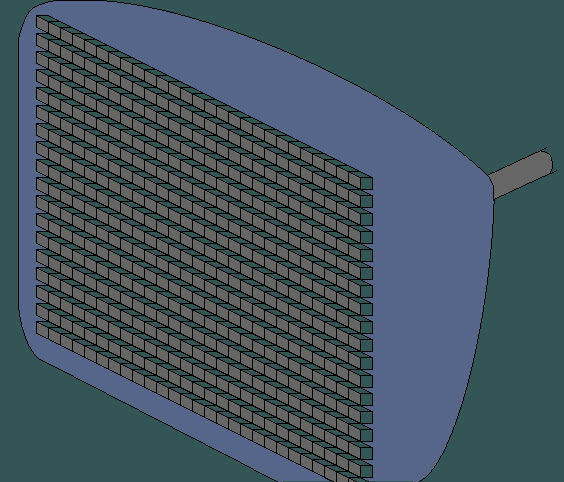
Lecture 16 - Scan Converting Lines, Circles and Ellipses (cont.) Lecture 15 - Scan Converting Lines, Circles and Ellipses (cont.) Lecture 14 - Scan Converting Lines, Circles and Ellipses (cont.) Lecture 13 - Scan Converting Lines, Circles and Ellipses Lecture 12 - 3D Viewing - Projection Transformations and Viewing Pipeline Lecture 11 - Projection Transformations and Viewing Pipeline Lecture 10 - Three Dimensional Graphics (cont.) Lecture 09 - Three Dimensional Graphics (cont.) Lecture 07 - Transformations in 2D (cont.) Lecture 04 - CRT Display Devices: Refresh and Raster Scan Display System (cont.) Lecture 03 - CRT Display Devices: Refresh and Raster Scan Display System Lecture 02 - CRT Display Devices: Direct View Storage Tube, Random Scan Display Systems Lecture 01 - Introduction to Computer Graphics Go to the Course Home or watch other lectures: Lecture 41 - Advanced Topics: Anti-aliasing, Color, Soft Objects, Animation, Visual Effects Topics covered include CRT display devices, two dimensional transformations, three dimensional transformations, viewing in 3D, scan conversion, solid modelling, visible surface determination, illumination and shading, plane curves and surfaces, graphics programming using OpenGL, and digital image processing.
RASTER SCAN ANIMATION SOFTWARE
This course provides an introduction to computer graphics which plays a very important role in almost every applications of computer software and use of computer science. Sukhendu Das, Department of Computer Science and Engineering, IIT Madras. The site editor may also be contacted with questions or comments about this Open Educational Resource.Computer Graphics. Please send comments or suggestions on accessibility to the site editor. The College of Earth and Mineral Sciences is committed to making its websites accessible to all users, and welcomes comments or suggestions on access improvements. This courseware module is offered as part of the Repository of Open and Affordable Materials at Penn State.Įxcept where otherwise noted, content on this site is licensed under a Creative Commons Attribution-NonCommercial-ShareAlike 4.0 International License.

RASTER SCAN ANIMATION PROFESSIONAL
Penn State Professional Masters Degree in GIS: Winner of the 2009 Sloan Consortium award for Most Outstanding Online Program Dutton e-Education Institute College of Earth and Mineral Sciences, The Pennsylvania State University. Dutton e-Education Institute and Assistant Program Manager for Online Geospatial Education, and Adrienne Goldsberry, Senior Lecturer, John A. Dutton e-Education Institute, Beth King, Senior Lecturer, John A.

Dutton e-Education Institute Ryan Baxter, Senior Research Assistant, John A. Instructors and contributors: Jim Sloan, Senior Lecturer, John A.

Dutton e-Education Institute, and Director of Education, Industry Solutions, Esri. Later in this chapter, we'll discuss some of the image processing techniques that are used to correct remotely sensed image data.Īuthor: David DiBiase, Senior Lecturer, John A. All of these complexities combine to yield data with geometric and radiometric distortions that must be corrected before the data are used for analysis. And while a document in a desktop scanner is illuminated uniformly and consistently, the amount of solar energy reflected or emitted from the Earth's surface varies with latitude, the time of year, and even the time of day. In the desktop scanner, the scan head and the document are separated only by a plate of glass satellite-based sensing systems may be hundreds or thousands of kilometers distant from their targets, separated by an atmosphere that is nowhere near as transparent as glass. Documents lie still while they are being scanned, but the Earth rotates continuously around its axis at a rate of over 1,600 kilometers per hour. Documents are flat, but the Earth's shape is curved and complex. Unlike the document, the Earth's surface is too large to be scanned all at once, and so must be scanned piece by piece, and mosaicked together later. As you might imagine, scanning the surface of the Earth is considerably more complicated than scanning a paper document with a desktop scanner.


 0 kommentar(er)
0 kommentar(er)
